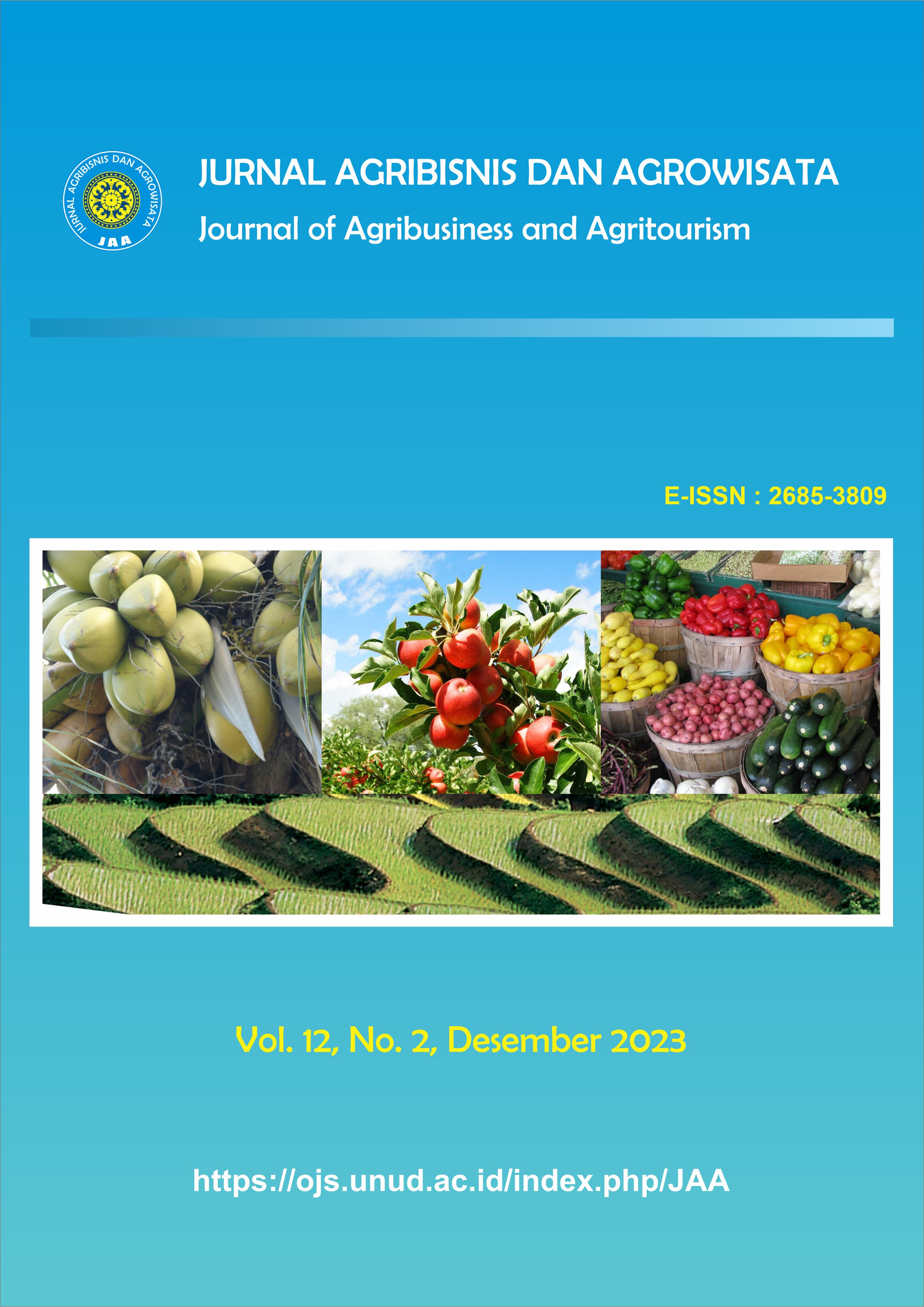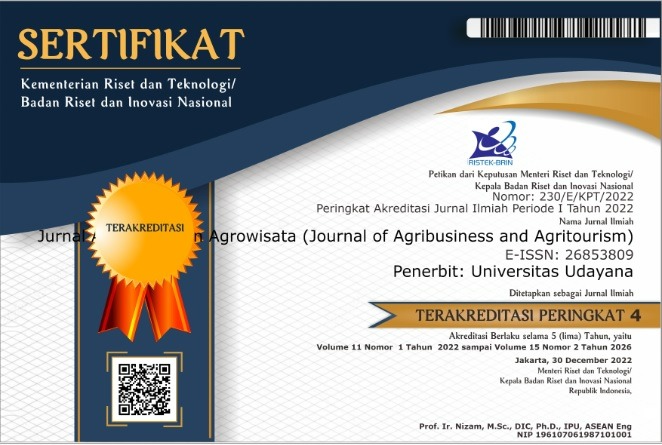Analisis Rantai Pasok Dan Nilai Tambah Kopi Arabika Kintamani Bali (Studi Kasus Di Desa Catur Kecamatan Kintamani, Kabupaten Bangli, Provinsi Bali)
Abstract
Supply Chain Analysis and Value Added of Kintamani Bali Arabica Coffee (Case Study at Catur Village, Kintamani District, Bangli Regency, Bali Province). Coffee is a plantation commodity that is used as a raw material for the processing industry. One of them is Kintamani Bali Arabica coffee. The availability of Arabica Coffee raw materials is indispensable for the sustainability of processing industry to meet consumer demand. The effort that can be done is by identifying supply chain flows. Processed products from the coffe processing industry are hardskin coffee, greenbean coffee and ground coffee. The purpose of this study is to find out the flow of goods, the flow of financial, the flow of information from upstream to downstream and from downstream to upstream, as well as to find out the added value of each processed product. This research was conducted at the Catur Village of Kintamani Subdistrict. Data collection methods used interview and documentation techniques. The sample determination method used proportional random sampling techniques and purposive sampling. Respondents in this study were Arabica coffee farmers at Catur Village, Product Processing Unit (UPH Catur Paramitha), wholesalers PT Nusa Agro Bali, retailers (cooperatives and coffee shops). The data analysis method used qualitative descriptive analysis and hayami method value-added analysis. The results showed that in the flow of goods there are red bobbin coffee products, HS coffee, greenbean coffee, ground coffee and brewed coffee. The flow of money there is a payment system made in cash and down payment (DP) 50%. The information flow all members have made good communication related to stock availability, the number of requests and others. The added value obtained from processed products in one-cycle process is Rp 7.901,67/kg for HS coffee, Rp 10.222,83/kg for GB coffee, Rp 20.471,80/kg for ground coffee, with the added value ratio of 60,78%, 66,82%, 79,97%, meaning that the three products are declared to have high added value where the highest added value was in ground coffee processed product.
Downloads
References
Arikunto, Suharsimi. 2006. Prosedur Penelitian Suatu Pendekatan Praktik. Jakarta: Rineka Cipta.
Hadiguna, Rika Ampuh. 2016. Manajemen Rantai Pasok Agroindustri. Padang: Andalas University Press.
Ruseffendi, ET dan Achmad Sanusi. 1994. Dasar-Dasar Penelitian Pendidikan dan Bidang Non Eksata lainnya. Semarang: IKIP Semarang Press.
Saroyo, K.H. 2014. Jenis Dan Karakteristik Kopi Arabika. https://caswellscoffee .com/jenis-dan-karakteristik-kopi-arabika/, diakses pada 9 Juli 2020
Soekartawi. 2001. Pengantar Agroindustri. 1st ed. Jakarta: PT Raja Grafindo Persada.
Sudiyono, Armand 2004; dalam Darmawan, 2018. Analisis Nilai Tambah dan Kelayakan Usaha Manisan Terung UD Berkat Motekar di Desa Pemuda Kabupaten Tanah Laut. Skripsi Jurusan Teknologi Industri Pertanian. Kalimantan Selatan: Politeknik Negeri Tanah Laut.
Sugiyono. 1999. Metodologi Penelitian Administrasi. Edisi Kedua. Bandung: CV Alfa Beta.
Sukmadinata. 2011. Metode Penelitian Pendidikan. Bandung: Remaa Rosdakarya.
Tambunan, T.H. 2001. Perekonomian Indonesia. Jakarta: Ghalia.







